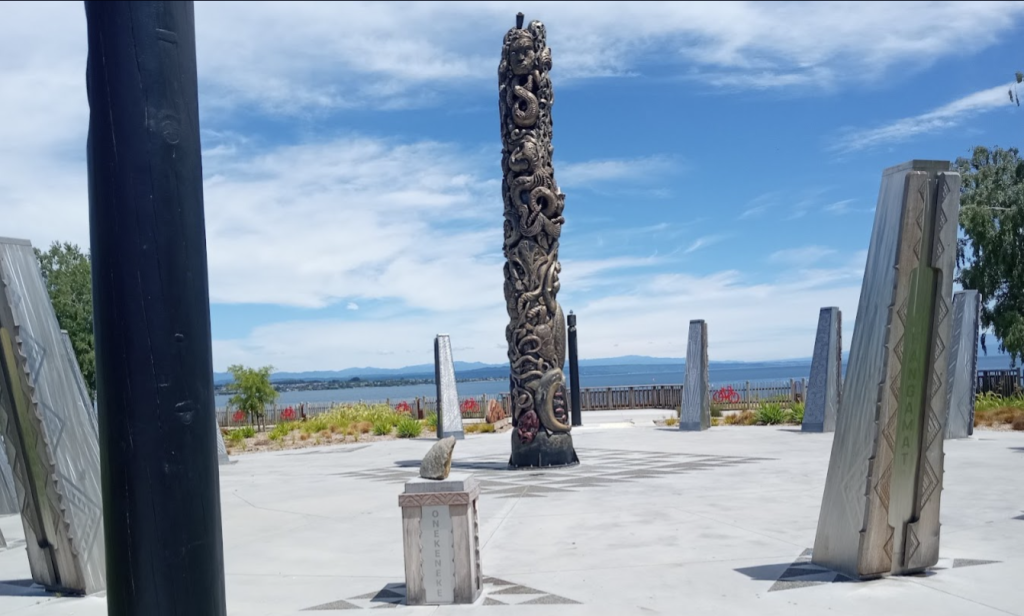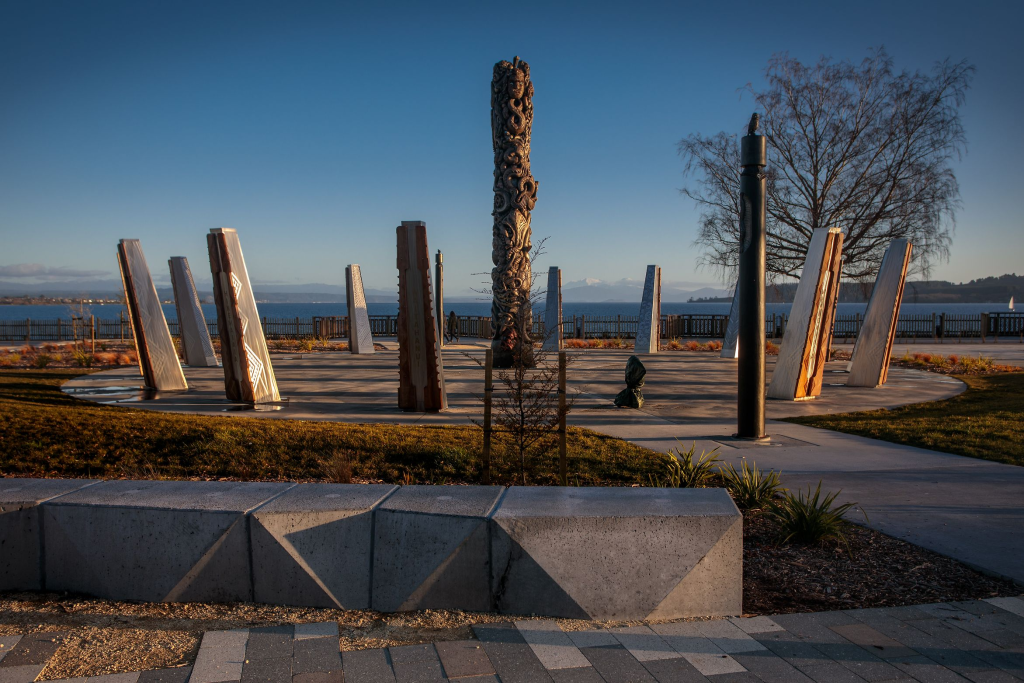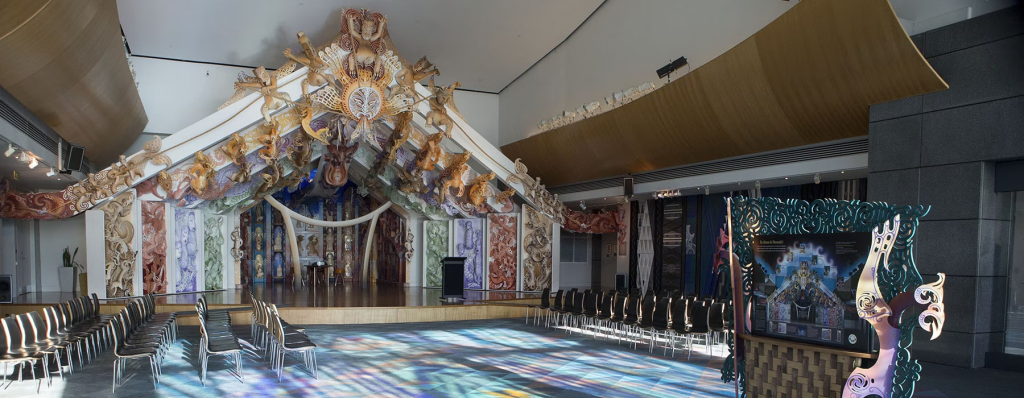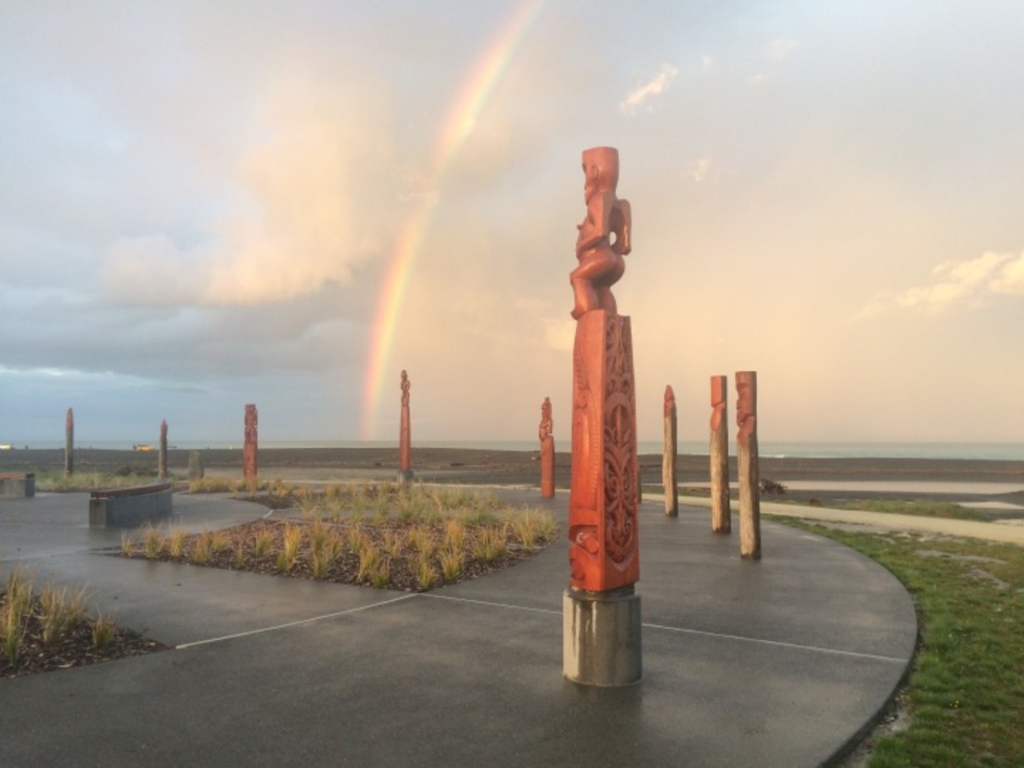
Recently returned from a trip to New Zealand, where I was heartened and intrigued to note that traditional Māori cultural/spiritual symbolism is increasingly being incorporated into public space design. The photo above is of Te Ātea (“the Space”) on the Lake Taupo foreshore:
There are a number of different elements that come together to form Te Ātea as a whole, each as important as the other. But the most poignant feature of Te Ātea is the giant centrepiece – the pou (a pillar/spear) and ancestor of Kani – carved from a 2,000-year-old Totara tree by master carver Delani Brown.
It took Delani around nine months to complete the pou, and what began as a scribble on a piece of paper soon became a journey not even the carver himself could foresee.
“The finished product is very different from where I started. That’s because the wood comes to life and, through ancestors that visit me while I’m carving, it talks to me.” – Delani Brown
Top to bottom, the pou is adorned with representations of nature, the cycle of life, family and a connection with everything above and below. It also acknowledges our koha (donation) to the sea and ocean, as the waters that feed the Pacific and sustain sea life have their origins in the Maunga of Tongariro. Because of this, there are various sea creatures featured on the pou.
And in case you were wondering, yes, you can touch the centre pou. Delani explains that it gives more mauri (life force or essence) to the pou, but he says if you are going to take a photo, make sure you are in it – this ensures the story continues.
Te Ātea itself is about providing a safe meeting space for all, much like in front of the whare (meeting house) on a marae. And the 13 metal pou around the centre pou represent the 13 main rivers/tributaries that flow into Lake Taupō, providing a geographical reference too – they are placed as you would find them around the Lake Taupō region.
Outside the 13 metal pou are also four black timber pou, which not only illustrate the compass points of north, south, east and west, but acknowledge people from four corners of the world, the four elements, the four seasons and four birds (ruru, riroriro, huia and piwakawaka).


Neither simply a civic plaza nor an art installation, Te Ātea also serves an explicitly ceremonial purpose as the setting for pōwhiri (welcoming rituals) and similar events.
Although I doubt that anyone in contemporary Aotearoa/New Zealand thinks of ancient Maori deities as literally supernatural beings, it is common to hear and see representations of Papatūānuku (the Earth Goddess), Tāne (the Forest God) and other figures, spoken and/or depicted reverently, as deeply meaningful metaphors. Un-“worshipped” in the direct sense, sans even literal belief, they live on through the narrative media of art, poetry and ritual.
From the CultPunk/Poetic Faith perspective, Te Ātea and similar sites throughout New Zealand – including the contemplation room at the Sarjeant Art Gallery in Whanganui, Rongomaraeroa (the marae or meeting space at Te Papa, the national museum in Wellington) and the Ātea a Rangi star compass site in the Hawkes Bay region offer a fascinating glimpse into the potentials of civic mythopoetics.


Perhaps one day there will be a pilgrimage route between these secular/sacred sites …
